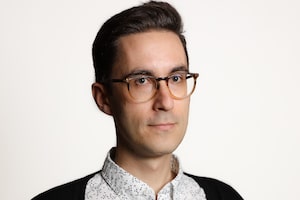The court-appointed monitor overseeing the hunt for $250-million in cash and cryptocurrency owed to users of QuadrigaCX says it has contacted numerous exchanges and payment processors for information, but has so far found little additional money.
Ernst & Young Inc. filed its third report on Friday since Quadriga Fintech Solutions Corp., which operated the trading platform, filed for creditor protection in January. Ernst & Young said it has contacted 14 cryptocurrency exchanges about accounts that Quadriga or its founder, Gerald Cotten, may have opened. Four exchanges responded and some confirmed the existence of relevant accounts. One exchange held “minimal cryptocurrency” on behalf of Quadriga, according to the report.
Mr. Cotten, 30, died in December due to complications from Crohn’s disease while travelling in India on his honeymoon. About $180-million of Quadriga’s cryptocurrency holdings cannot be found, according to an affidavit filed by Jennifer Robertson, Mr. Cotten’s widow, because he was the only one with access.
Ernst & Young said it has also learned of 14 Quadriga user accounts that may have been created outside the normal process by the company, and appear to have been created under aliases. The monitor was advised by a representative of the company that the accounts were internally created without a corresponding customer and used to trade on Quadriga’s platform. Deposits into some of the accounts “may have been artificially created and subsequently used for trading” on the platform, the report said. Ernst & Young received detailed transaction histories for the accounts, which show significant activity, including trading and withdrawals to wallet addresses not associated with Quadriga.
The monitor said in its report it is still seeking information about Quadriga’s operations, including formal accounting books and financial records. Quadriga has been “unable to locate or provide any such records,” the monitor said. Ernst & Young also contacted the Canada Revenue Agency to determine whether Quadriga filed any tax returns.
The company kept its cryptocurrency assets in cold wallets, an offline storage system, to thwart hackers. Six cold wallet addresses have been identified. The monitor found that in April, 2018, the bitcoin stored in the wallets was transferred out. Ernst & Young said it has inquired about the lack of cryptocurrency reserves in the wallets since April, 2018, but the company has been “unable to identify a reason why Quadriga may have stopped” using the wallets for deposits. Some of the bitcoin may have been transferred to accounts on other exchanges, according to the monitor.
Meanwhile, the monitor has been working to retrieve funds held by Quadriga’s payment processors, including $25.3-million in bank drafts from Costodian Inc., owned by Jose Reyes. (Quadriga could not obtain corporate bank accounts and relied on payment processors for customer transactions.) The Royal Bank of Canada has deposited the funds, which were previously part of a pool of money that had been frozen by the Canadian Imperial Bank of Commerce, into a disbursement account. CIBC had frozen the money and handed it over to the court, which released it to Quadriga and its payment processor in the form of bank drafts.
The report said Ernst & Young has released $60,958.64 to Mr. Reyes, who claimed it was his personal funds. Another $778,213.94 of the drafts has been placed into a separate bank account, pending a court order. Costodian says it is owed that amount by Quadriga for unpaid processing fees.
Ernst & Young has written to 10 third-party payment processors that provided services to Quadriga to request any funds held on behalf of the company. Only $5,000 has been recovered to date, in addition to the bank drafts, the monitor said.
The monitor is working to obtain a copy of the platform data--which includes user account balances and transaction information – from Quadriga and Amazon Web Services. Amazon told the monitor it is unable to provide the data because the account is in Mr. Cotten’s name. Ernst & Young is asking for a court order to resolve the issue.
Earlier this week, Ms. Robertson, who became a director of Quadriga after her husband’s death, asked for the appointment of a chief restructuring officer (CRO) owing to the “unwarranted” public attention she has been receiving, including accusations of hiding assets from creditors. (Her stepfather, Thomas Beazley, also joined the board after Mr. Cotten’s death.) Ernst & Young says it “continues to see some benefit” of appointing a CRO.
Miller Thomson LLP, which represents Quadriga’s affected users, did not respond to a request for comment.
 Joe Castaldo
Joe Castaldo Alexandra Posadzki
Alexandra Posadzki